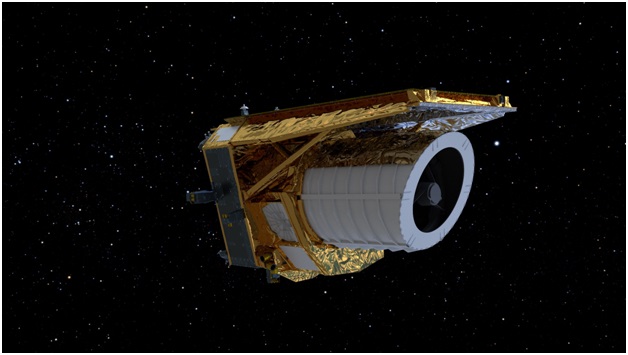Euclid Mission (NASA)

- 07 Nov 2023
Why in the News?
The Euclid mission, which will investigate the mysteries of dark matter and dark energy, released its first five science images recently.
About Euclid Mission:
- Euclid is a European mission, built and operated by European Space Agency (ESA), with contributions from NASA.
- Euclid is designed to give important new insights into the "dark side" of the universe -- namely dark matter and dark energy, both thought to be key components of our cosmos.
- It was launched from Cape Canaveral, Florida, (USA) on 1 July 2023 and the launch vehicle used was ‘SpaceX Falcon 9’.
- The mission derives its name from Euclid of Alexandria, an ancient Greek mathematician from around 300 BC, who laid the foundations of geometry.
- Euclid Mission Objective: The primary goal of the Euclid mission is to create a three-dimensional map of the universe, with time as the third dimension.
- This will be achieved by observing billions of galaxies, extending up to 10 billion light-years away, and covering over a third of the celestial sphere.
- Euclid will explore how the Universe has expanded and how structure has formed over cosmic history, revealing more about the role of gravity and the nature of dark energy and dark matter.
- The Euclid Consortium – consisting of more than 2,000 scientists from 300 institutes in 13 European countries, the U.S., Canada, and Japan – is responsible for providing the scientific instruments and scientific data analysis.
- NASA provided the detectors of the Near-Infrared Spectrometer and Photometer, NISP.
- Euclid is a medium-class mission in ESA’s Cosmic Vision Programme.
